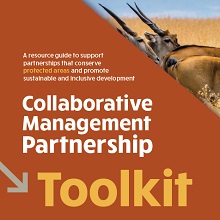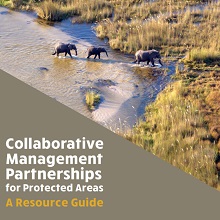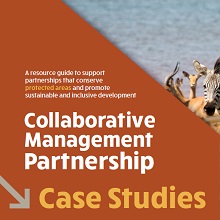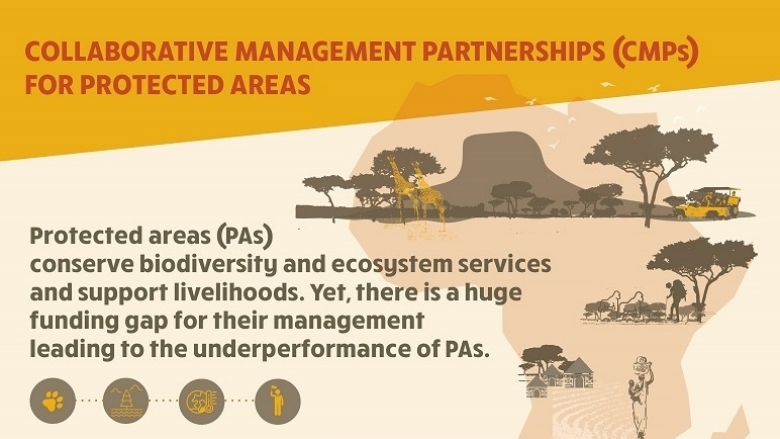Background
Well-funded, socially inclusive, and competently managed protected areas are the most effective tools to conserve biodiversity, yet many protected areas are failing to do so, often due to insufficient funding and capacity. CMPs are one of the tools that not only attract investment for conservation but also facilitate inclusive rural development and green growth. CMPs involve a protected area authority (government, private, community) entering a contractual arrangement with a partner (private or non-governmental organizations) for the management of a protected area.
In Africa, 15 governments have established 40 co-management and delegated CMPs with 13 NGOs, covering approximately 11.5 percent of Africa’s protected area estate. An analysis of these 40 CMPs shows that they have successfully attracted investments that enhanced biodiversity conservation, created local jobs, generated revenues, and stimulated sustainable development. Even during the COVID-19 pandemic, the CMPs documented in this Toolkit successfully maintained operations, did not reduce staff or salaries, and in most cases, provided additional support to help communities withstand the impact of COVID-19. For CMPs to succeed, they require sustained political commitment, long-term financial resources, effective local engagement, and an enabling environment that supports a transparent and clear process for establishing the partnerships.




